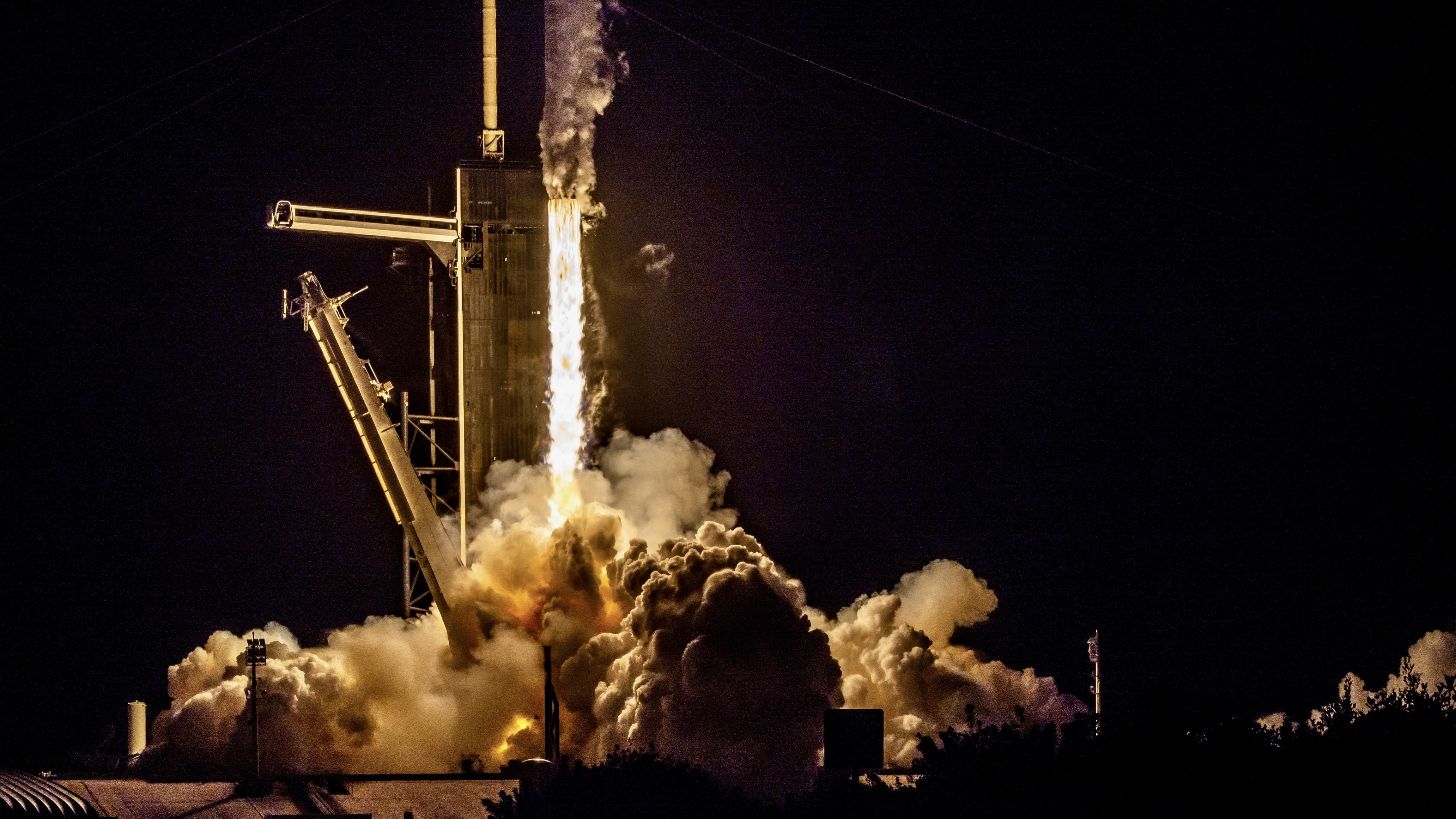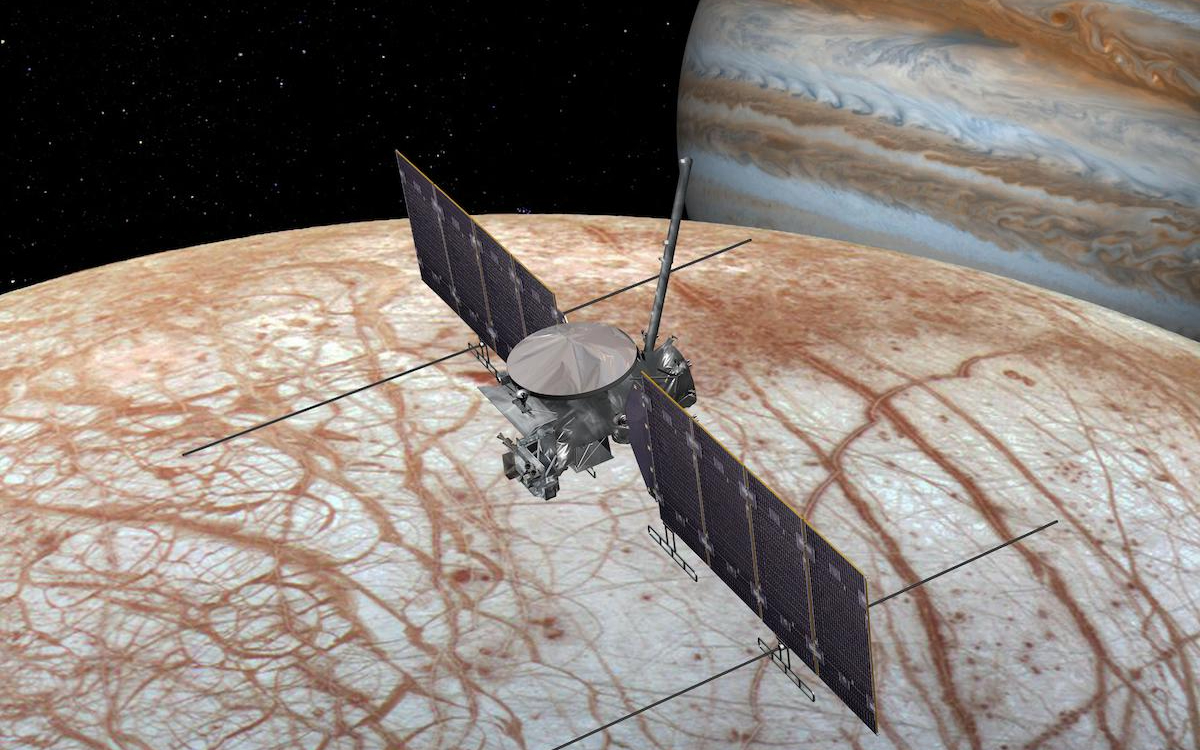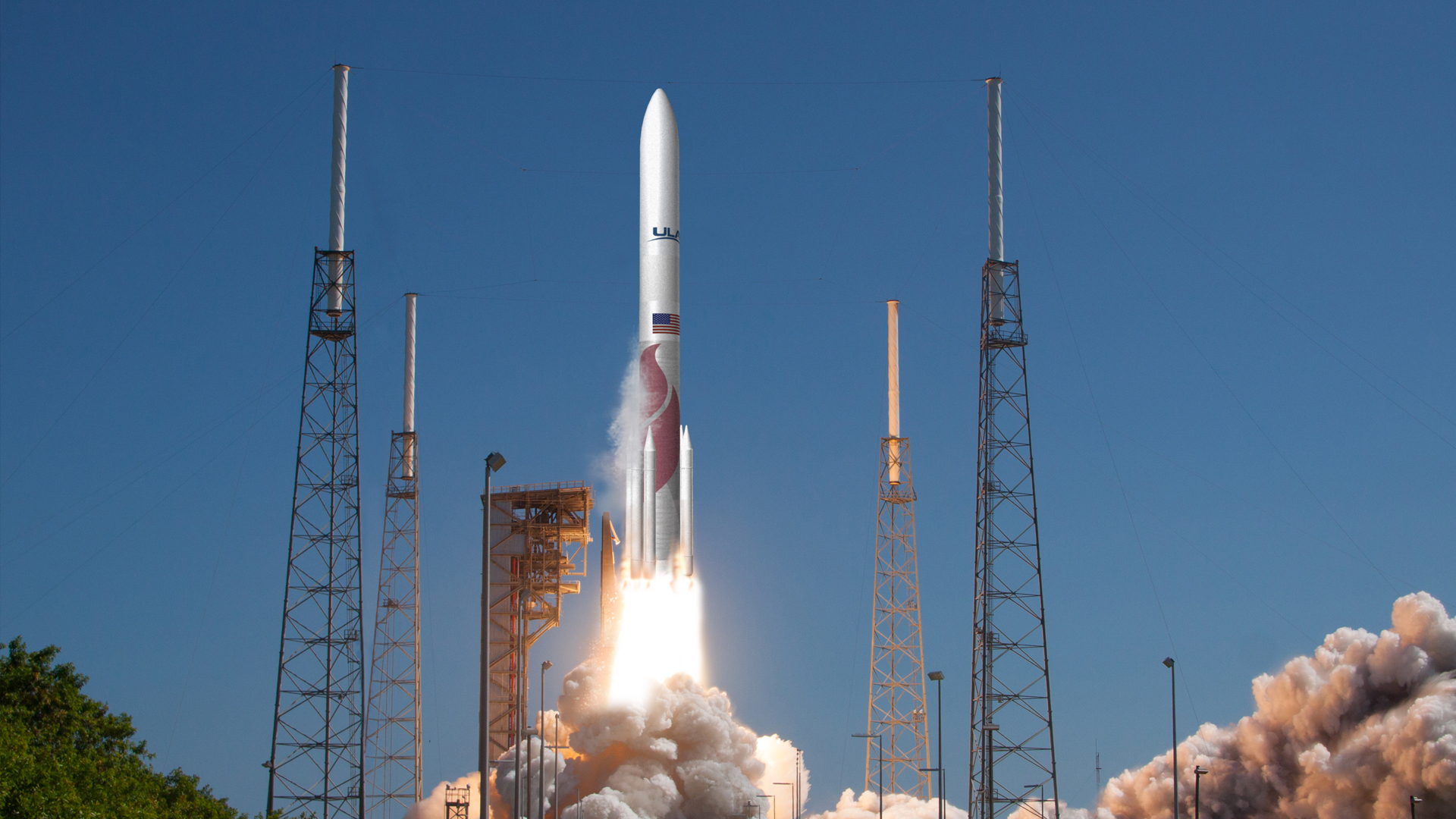10 exhilarating spaceflight missions to watch in 2024
From long-awaited rocket launches and lunar landers to crewed flights around the moon, here are a few exciting spaceflight missions to look forward to in 2024.

Next year is bound to be packed with exciting spaceflight missions, from long-awaited rocket launches to incredible moon missions — including some that'll dabble in lunar landers and crewed flights — a new Jupiter probe headed to the beyond and even a demonstration flight of a new International Space Station resupply spacecraft. With that in mind, here are a few particular missions we're looking forward to in 2024.
1. Moon Missions
The Japanese Aerospace Exploration Agency (JAXA) launched its Smart Lander for Investigating Moon (SLIM) mission on Sept. 6. Currently en route to the lunar surface, the spacecraft is scheduled for a Jan. 19 landing inside the moon's Shioli Crater. The SLIM mission aims to demonstrate a landing with a precision of less than 330 feet (100 meters) from the target. If successful, the spacecraft’s touchdown will mark the first-ever soft lunar landing for a Japanese spacecraft, and make Japan the fifth country to soft-land on the moon after the Soviet Union, the United States, China and India.
A company named Astrobotic Technology is also targeting the moon next year, with plans to launch its first lunar lander on Jan. 8, followed by a Feb. 23 landing attempt. The Peregrine lunar lander will carry 20 commercial and government payloads, including a small lunar rover developed by Carnegie Mellon University scientists and a set of smaller rovers provided by the Mexican Space Agency.
The launch window for Intuitive Machines' IM-1 lunar mission opens mid-February. This spacecraft aims to touch down near the south pole of the moon, requiring specific lighting conditions that are only available in the region for a handful of days each month. In partnership with SpaceX, the IM-1 mission will be the company's first attempted lunar landing as part of NASA's Commercial Lunar Payload Services (CLPS) initiative, which will later support the space agency’s Artemis program and plans to establish a sustainable human presence on the moon.
China’s Chang'e 6 mission is expected to launch in 2024, representing the country's second sample return mission. The lander will collect material from the South Pole-Aitken (SPA) basin on the far side of the moon. This mission follows the successful Chang'e 5 lunar sample return mission, which launched in 2020.
2. Artemis 2
If all goes to plan, humans are also going to be headed back to the moon in 2024. NASA's Artemis 2 lunar mission will send the first astronauts around the moon in nearly 50 years. Slated to launch no earlier than November 2024, the eight-day mission will fly four astronauts around the moon aboard an Orion spacecraft using a Space Launch System (SLS) rocket.
Venturing some 6,400 miles (10,300 kilometers) beyond the far side of the moon, the Artemis 2 mission represents the first crewed mission beyond low Earth orbit since Apollo 17 in 1972. The Artemis 2 crew includes NASA commander Reid Wiseman, NASA pilot Victor Glover (the first person of color to leave low Earth orbit), NASA mission specialist Christina Koch (the first woman to make the trip) and Canadian Space Agency astronaut Jeremy Hansen (the first non-American to make the trip).
Breaking space news, the latest updates on rocket launches, skywatching events and more!
3. Vulcan Centaur Rocket
After multiple delays over five years, the first flight of the United Launch Alliance’s (ULA) Vulcan Centaur rocket is scheduled for Jan. 8. The rocket has been fully assembled at Cape Canaveral, Florida, in preparation for its inaugural flight, which will carry multiple payloads, including Astrobotic Technology's aforementioned Peregrine lunar lander.
Standing 202 feet (62 meters) tall, Vulcan Centaur is the successor to the ULA's Atlas V and Delta IV rockets with an advanced capability to carry a payload of up to 7.7 tons to geostationary orbit. For its Jan. 8 launch, the rocket will also carry a payload from the space memorial company Celestis, which includes the remains of cast members of the original "Star Trek" television series — Nichelle Nichols, DeForest Kelley and James Doohan — as well as series creator Gene Roddenberry, his wife Majel Barrett Roddenberry and recurring series actor Majel Barrett Roddenberry.
4. Sierra Space Dream Chaser
NASA and Sierra Space expect to launch a demonstration mission of the company's Dream Chaser spacecraft in 2024 using the ULA Vulcan Centaur rocket. Dream Chaser is a private reusable spacecraft designed to send cargo and astronauts to low Earth orbit. The first uncrewed flight of the shuttle-shaped spaceplane will be to the International Space Station. Dream Chaser is scheduled to deliver over 7,800 pounds of cargo for this demonstration mission, but is capable of carrying upwards of 11,500 pounds. It can also ferry experiment samples, trash and other cargo from the orbiting lab back to Earth. If all goes well, Dream Chaser will be a key part of NASA's commercial resupply services program.
5. Polaris Dawn
The Polaris Dawn mission — a private human spaceflight mission operated by SpaceX on behalf of Jared Isaacman, the founder of payment provider Shift4 — is scheduled to launch no earlier than April 2024. Isaacman and three others will spend several days in low Earth orbit on a Crew Dragon spacecraft.
Polaris Dawn is the first of three planned missions in the Polaris program, which aims to conduct scientific experiments, raise money for St. Jude's Children's Research Hospital in Memphis, Tennessee, and to perform the first commercial spacewalk using SpaceX-designed spacesuits. Commanded by Isaacman, the Polaris Dawn crew includes one veteran astronaut and businessperson, two SpaceX personnel experienced in crewed and uncrewed launches and mission operations, and a former combat pilot.
6. Starship IFT-3
SpaceX's Starship rocket is gearing up for its third flight, IFT-3, within the first quarter of 2024. The IFT-3 of Ship 28 and Booster 10 aims to validate critical technologies essential for future lunar and interplanetary missions. This mission follows the company's second flight test (IFT-2) on November 18, 2023, which demonstrated successful hot staging but experienced telemetry loss after eight minutes of flight. Each flight test provides valuable data, from which the company can learn and adapt future attempts. That said, a critical test planned for IFT-3 is the propellant transfer utilizing two different tanks within Starship.
7. Ariane 6
The European Space Agency (ESA) aims to launch its Ariane 6 rocket in the middle of 2024. Recent tests were completed on Dec. 7 and Dec. 15, which entailed launch operation preparedness for the rocket's inaugural flight. While the Dec. 7 test of the rocket's upper stage was aborted shortly after what seemed to be a normal liftoff, the Dec. 15 test of the rocket's core and upper stages went smoothly.
The practice countdown ran as planned, concluding with a four-second firing of the core stage's Vulcain 2.1 engine. The cause of the abort during the Dec. 7 test is still under investigation, with an update expected to arrive mid-January. However, ESA does not expect this will impact the Ariane 6 schedule, with additional tests of the rocket's launch system slated for early 2024.
8. New Glenn’s ESCAPAGE Launch
The first launch of Blue Origin's New Glenn rocket appears promising for 2024 after a long history of delays since 2020. The two-stage heavy-lift rocket stands more than 320 feet (98 meters) tall, with the capability to haul nearly 100,000 pounds (45 metric tons) of payload into low-Earth orbit. New Glenn is designed to be a reusable launch vehicle for up to 25 missions. Slated for its inaugural flight is NASA's Escape and Plasma Acceleration and Dynamics Explorers (ESCAPADE) mission to study Mars' magnetosphere.
This ESCAPADE mission consists of two identical small spacecraft that will collect two-point observations simultaneously to better understand how energy and plasma enter and leave the magnetosphere, and how they interact with solar wind. It will take roughly 11 months for the ESCAPADE probes to arrive at Mars post-launch.
9. Europa Clipper

NASA plans to send a spacecraft to explore Jupiter's moon Europa in 2024. Aptly named the Europa Clipper, the spacecraft will study the icy Jovian moon to determine whether its underground ocean is habitable. It is scheduled to launch on Oct. 6, 2024, atop a SpaceX Falcon Heavy rocket and arrive at Jupiter on April 11, 2030.
The spacecraft will orbit Jupiter, instead of Europa, due to radiation concerns. Europa (the second large moon out from Jupiter) lies deep inside the planet's magnetosphere, where charged particles generated by the gas giant’s powerful magnetic field could harm the spacecraft's electronics. Once it reaches Jupiter, the spacecraft will make nearly 50 flybys of Europa — one of the most promising places in the solar system to search for life beyond Earth — with its closest approach of only 16 miles (25 kilometers) above the moon’s surface, allowing for a tantalizing close-up view of the moon's subsurface oceans.
10. Boeing Starliner
The first crewed test flight of Boeing's Starliner spacecraft is tentatively scheduled for mid-April. The eight-day mission includes test pilots Butch Wilmore and Suni William, who will travel to the International Space Station on the reusable capsule. Manufactured by Boeing, Starliner consists of a reusable crew capsule and an expendable service module. The spacecraft is designed to transport crew to low-Earth orbit and will be used for NASA's Commercial Crew Program. For its first test flight, Starliner will launch on a ULA Atlas V rocket.
Boeing has struggled with delays to launch its first crewed test flight for years. The company announced the vehicle will be ready by March; however, NASA ultimately determines the timing of the launch, and due to traffic at the space station, the opportunity for Starliner to liftoff to the orbiting lab will be no earlier than April 2024.

Samantha Mathewson joined Space.com as an intern in the summer of 2016. She received a B.A. in Journalism and Environmental Science at the University of New Haven, in Connecticut. Previously, her work has been published in Nature World News. When not writing or reading about science, Samantha enjoys traveling to new places and taking photos! You can follow her on Twitter @Sam_Ashley13.


